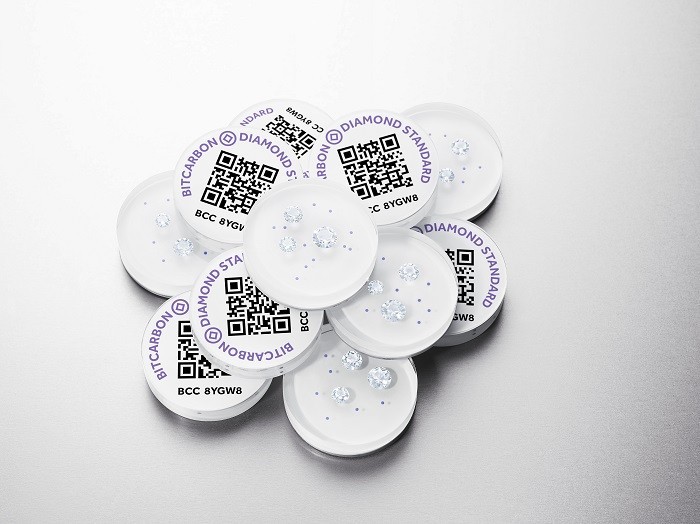Blockchain Startup Aims to Open the $1T Diamond Market to More Investors

A pioneering software entrepreneur believes his nearly five-year-old blockchain company has found a way to open the $1.2 trillion diamond market to a wider group of investors.
Cormac Kinney sees Diamond Standard as a way to remove the major obstacles from owning and investing in the precious stones. Diamond Standard’s patented technology creates a more transparent system allowing investors to track supply chains and subsequent ownership of the world’s ultimate bling more easily and efficiently.
Kinney noted in an interview with CoinDesk that the diamond market is “bigger than almost all other precious metals combined, except gold.” That diamonds are uncorrelated to gold, stocks or bonds also provides investors with a hedge.
“Blockchain was the last technology that we needed to turn diamonds into a commodity and unlock this new asset as a hedge, as a store of wealth, as a speculative investment and, ultimately, as a digital currency asset,” Kinney said.
Despite diamonds’ allure throughout history, the industry has struggled to attract investors largely because gem markets, which are spaced in different parts of the world, lack a uniform system for standardizing value.
The long, antiquated process of mining and transporting diamonds also presents an obstacle for investors looking for clarity and order. “With a diamond, the only way to move ownership in a consistently provable way across several different entities (the miner, the broker and the store) is to physically move the diamond between those entities,” said Patrick White, co-founder and CEO of digital asset finance platform Bitwave.
Transforming an industry
Kinney saw an opportunity to transform the diamond industry through blockchain technology with its built-in ability to record information securely and accurately. The former quantitative finance manager at several financial services firms and founder of six technology startups has focused much of his 27-year career developing platforms that improve the way organizations collect and analyze data, including heat maps and other technologies providing real-time information.
Diamond Standard, which is licensed in Bermuda to issue, sell and redeem tokens and digital assets, provides retail and institutional investors with a diamond-backed digital currency that has standardized value and liquidity. Physical coins, which the company stores in a vault, hold eight to nine standardized diamonds. The diamond-embedded tokens are digitized through an Ethereum-based digital coin, bitcarbon, which is tradable on different exchanges. The company has also established a peer-to-peer marketplace to trade its token directly.
More recently, Diamond Standard introduced a fund that already has more than $100 million in investments, Kinney said. The fund allows investors to invest in both digital assets and commodities without having to navigate regulations, he said. “We have a lot of clients who liked the [Diamond Standard] investment thesis and wanted to allocate [funds] to diamonds, but they couldn’t buy the coins or bars, and they couldn’t buy the token,” Kinney said. “So they buy the fund.”
Tokenized commodities
Tokenization of commodities has been popular among investors and traders during periods of high inflation by providing access to assets that are hedges against rising prices and volatile markets. A physical gold-backed token, PAX gold (PAXG), which has a market cap of nearly $600 million according to CoinMarketCap, is one example. But even agricultural commodities such as soy and corn are being tokenized to provide access to investors and farmers.
Read more: Santander Launches Loans Backed by Tokenized Commodities Such as Soy and Corn
Digitization of commodities also creates transparency and efficiency for investors, unlocking liquidity for the asset class. “By enforcing a more efficient financial system, tokenization effectively reduces market risk and enforces a greater level of security for data analysis and reporting,” said RA Wilson, chief technology officer of digital asset exchange for carbon credits 1GCX.
“It also creates new ways for derivatives to be traded, increases liquidity in order to tighten spreads (the difference between two prices), and creates real-time reporting mechanisms that will allow for greater transparency within the commodities markets,” he added.
Bitwave’s White said that digitized assets also address potential legal issues.
“Suddenly, changing the ownership of a diamond, in a way that has enormous amounts of documented evidence and will stand up in a legal setting, can happen entirely through simple on-chain transactions,” he said.“This fundamentally changes the nature of supply chains, where ownership can move disjunct from physical location, and vice versa.”
Could Diamond Standard’s set a new trend?
1GCX’s Wilson noted optimistically that tokenization’s vastly improved “transparency and market governance within the entire commodities industry” make it “the logical next step toward advancing and scaling our most important global markets.”
“It allows these markets to trade 24/7 rather than being limited to traditional trading hours, which will create even greater opportunity for growth within the space,» he said.
Read more: Putting it on the Diamond Chain: Tiffany and Co Reveals $50K CryptoPunk Pendant






 Bitcoin
Bitcoin  Ethereum
Ethereum  Tether
Tether  USDC
USDC  TRON
TRON  Dogecoin
Dogecoin  Cardano
Cardano  Bitcoin Cash
Bitcoin Cash  Chainlink
Chainlink  Monero
Monero  Zcash
Zcash  Stellar
Stellar  LEO Token
LEO Token  Litecoin
Litecoin  Hedera
Hedera  Dai
Dai  Cronos
Cronos  Tether Gold
Tether Gold  OKB
OKB  Ethereum Classic
Ethereum Classic  KuCoin
KuCoin  Gate
Gate  Algorand
Algorand  Cosmos Hub
Cosmos Hub  VeChain
VeChain  TrueUSD
TrueUSD  Dash
Dash  Tezos
Tezos  Stacks
Stacks  IOTA
IOTA  Basic Attention
Basic Attention  Theta Network
Theta Network  Decred
Decred  NEO
NEO  Synthetix
Synthetix  Qtum
Qtum  Ravencoin
Ravencoin  0x Protocol
0x Protocol  DigiByte
DigiByte  Nano
Nano  Zilliqa
Zilliqa  Siacoin
Siacoin  Numeraire
Numeraire  Waves
Waves  BUSD
BUSD  Status
Status  Enjin Coin
Enjin Coin  Pax Dollar
Pax Dollar  Ontology
Ontology  Hive
Hive  Lisk
Lisk  Steem
Steem  Huobi
Huobi  NEM
NEM  OMG Network
OMG Network  Bitcoin Gold
Bitcoin Gold  Augur
Augur  Ren
Ren  HUSD
HUSD